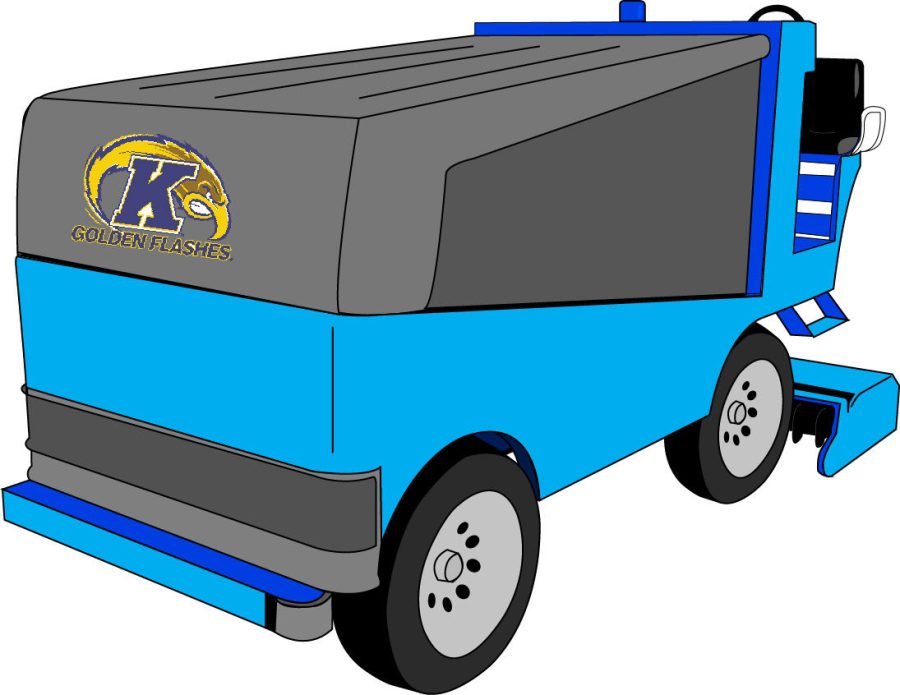Behind the wheel of the Kent State Zamboni
April 8, 2015
Nineteen years and three Zambonis later, Kent State maintenance repair worker crew leader Keith Fischer is not ready to leave his job at the Ice Arena behind.
Fischer, now 49 years old, began his career at Kent State as a member of the grounds crew in 1988. After driving a snowplow for eight years, Fischer started working as a recreation facility worker at the Ice Arena. It was there where Fischer’s boss, Rich Mest, first introduced him to the Zamboni 19 years ago.
“He took me out on it, and we did one pass around,” Fischer said. “He showed me how to turn everything off and how to turn everything on, pull on the ice, pull off the ice, and we did that for about 15 minutes until he said, ‘Here you go. Now you’ve learned. Have a good night.’ Then he left and I basically learned by doing.”
Driving a half-ton machine in circles across a sheet of ice may not sound like an easy task, but Fischer said it is very similar to driving a car in the winter.
“If you live anywhere in the northern states, you know how drive on snow and ice,” Fischer said. “If you get going too fast in the corners, you will slide, but it does have studded tires and a bit of weight to it so you maintain balance.”
Thanks to these features, Fischer said he has only crashed one time driving the Zamboni.
“Every once in a while I like to test the bounds of seeing how fast I can go, just so I know time-wise how fast it takes to make an ice cut,” Fischer said. “We got it down to where we could cut the ice in about six to seven minutes, but that was dangerous and during that six or seven minutes, I did slide and ended up hitting the boards. I didn’t do any major damage, but that gave us an idea of how fast we could go.”
A Zamboni driver has one of the most important jobs at any ice rink. Drivers are responsible for safely preparing and restoring the ice surface back to its original condition.
“Keith is very important to the Ice Arena because he has a complete understanding of how the mechanical equipment runs and without that we would not have a useable ice surface,” said Jim Underwood, assistant manager of hockey programs. “He is that guy that understands the mechanical side, and he gets it done.”
With retirement looming in the near future, Fischer said he is not yet ready to leave the arena.
“In theory, I have three years before I am eligible to retire,” Fischer said. “As long as I can come into work and enjoy what I am doing, I am in no real hurry.”
After working at the arena for so long, Fischer said he enjoys seeing a lot of new faces as well as some familiar ones.
“It is really nice now to see a lot of the hockey players that played when I first started working here bringing their kids back to the rink and getting them skating,” Fischer said. “You know you’ve been here too long when you’ve seen two generations of hockey players come through here from the same family, but then again it’s cool to see that they are still keeping the game alive with their kids and that’s probably one of the best parts about it.”
Contact Zac Sommer at [email protected].












